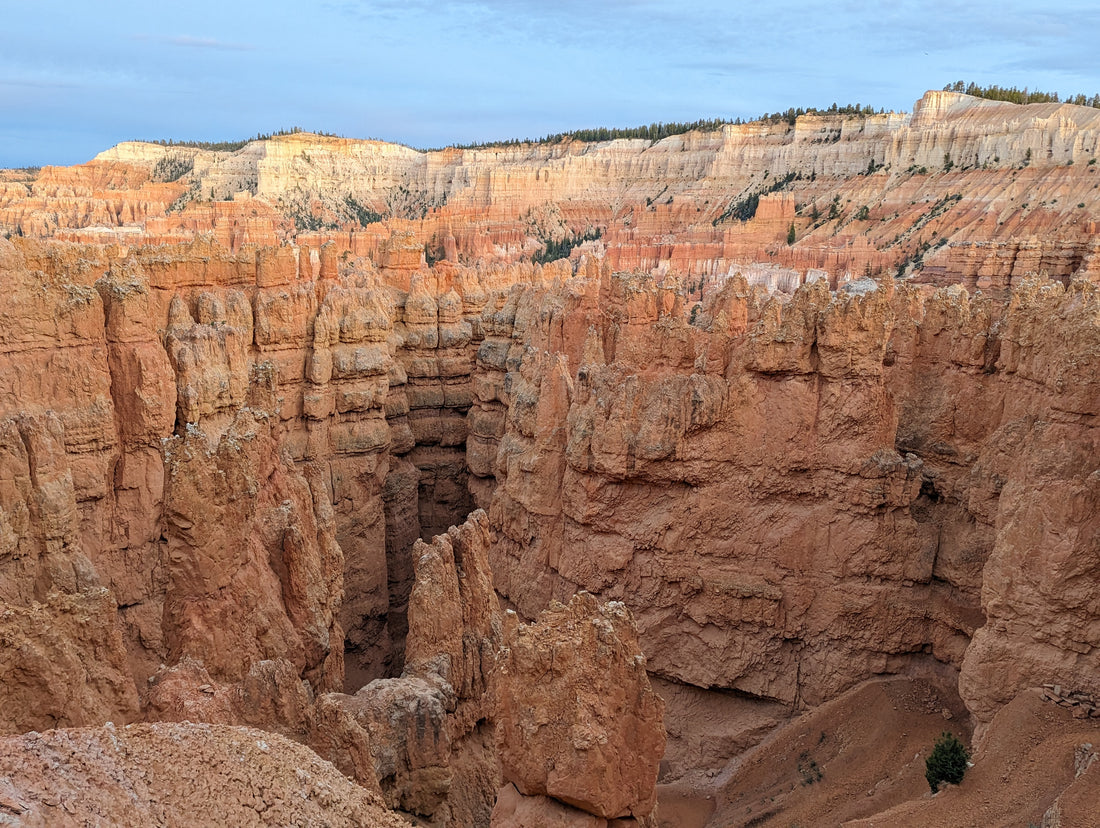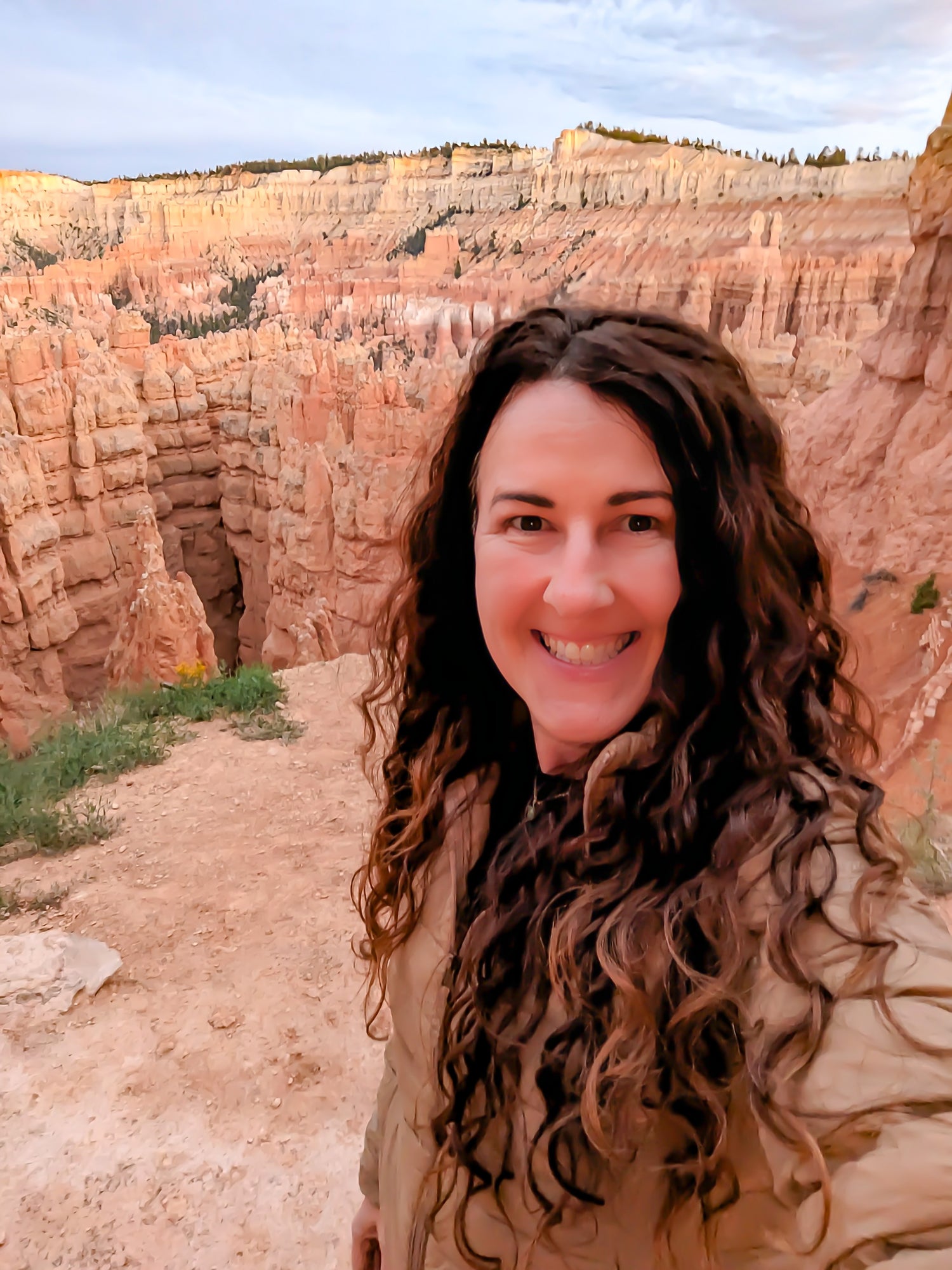Nestled within the heart of Southern Utah lies Bryce Canyon, a captivating natural wonder that beckons explorers from around the world. However, Bryce is more than just a pretty spot to snap a photo or two. Check out the top 10 things you need to know to enhance your visit to this spectacular national park.
1. Not Just a Canyon
Contrary to its name, Bryce Canyon is more than a conventional canyon. Instead of just one vast canyon, the landscape here at this national park is characterized by a series of breathtaking natural amphitheaters that stretch across the edge of the Paunsaugunt (PAWN-suh-gant) Plateau. These amphitheaters are the result of a combination of geological processes, including erosion, frost weathering, and the relentless action of water. The most common feature in the amphitheater? Bryce's iconic hoodoo.

2. Hoodoos' Enigma
The ethereal hoodoos that grace Bryce Canyon are intricate formations that stand as spire-like sentinels of nature's artistry. Hoodoo formation begins with the freeze-thaw cycle. During the daytime, melted snowwater seeps into the rocks, only to freeze at night, causing the water to expand and exert pressure on the rocks. Over time, this process creates cracks and fractures, making the rocks more susceptible to erosion. Rainwater and melted snow trickle down through these cracks, gradually wearing away the softer rock layers and sculpting the intricate shapes that we now recognize as hoodoos.
Visitors to Bryce Canyon are often left in awe of the otherworldly formations that unfold before them. As the sun shifts across the sky, the hues of the rocks transform, casting an ever-changing display of light and shadow on the hoodoos. Walking along the rim or descending into the amphitheaters offers a close-up look at these remarkable creations of nature's artistry.
Keep in mind that hoodoos are extremely fragile. To find out more about how to protect these beautiful natural wonders, read here.

3. Varying Elevations
As you embark on your journey through Bryce Canyon, you'll traverse elevations that range from around 6,620 feet (2,020 meters) at its lowest point to soaring heights exceeding 9,100 feet (2,780 meters) at Rainbow Point. This drastic variation in altitude contributes to the park's unique geography and ecological diversity.
The varying elevations within the park result in a dramatic shift in climate zones. At the canyon's rim, the air is notably cooler, making it a respite from the summer heat. As you descend into the depths of the amphitheaters, you'll experience a rise in temperature and a transformation in the flora and fauna that call these regions home. In these areas, tiny flowers barely cling to life on the edges of the sandstone. Trees, with their roots exposed, create gnarly, twisted sculptures.


At the higher elevations, you'll find spruce-fir forests that thrive in the cooler and moister conditions. Moving downward, the landscape transitions to ponderosa pine forests, adapting to the drier climate. The park's floor boasts pinyon pine and Utah juniper woodlands, showcasing the remarkable adaptability of nature.

4. Ancient Rock Tales
Bryce Canyon's captivating rock formations are more than just stunning visuals – they are the pages of a geological history book that dates back over 50 million years. Each layer tells a story of Earth's transformation, providing a glimpse into the eons of change that have shaped this mesmerizing landscape.

The rocks that form the foundation of Bryce Canyon were deposited over millions of years in ancient seas, lakes, and deserts. As these sediments settled, they formed distinct layers that serve as time markers, each revealing clues about the conditions and environments of the past.
The lowermost layers of Bryce Canyon are like a portal to a time when a vast prehistoric sea covered the region. Fossilized marine organisms, imprints of ancient sea life, and remnants of the seafloor are all preserved within these sedimentary layers, offering a connection to a world that existed long before the hoodoos.
5. The Paiute -- The Original Stewards of Bryce
Long before Bryce Canyon became a national park, the Paiute people called this area home. Their presence here stretches back thousands of years, and their deep understanding of the land's rhythms and stories has left an indelible mark on the region.
The Paiute tribe has a rich oral tradition that weaves together the natural world, spirituality, and everyday life. According to Paiute legends, the hoodoos and rock formations are the "Legend People" – individuals who were turned into stone as a result of their misdeeds. These legends not only offer an explanation for the unique formations but also impart moral lessons and a sense of reverence for the land.
The Paiute people are regarded as the original stewards of Bryce Canyon. Their intimate knowledge of the land's resources, flora, and fauna allowed them to live in harmony with their surroundings. Their sustainable practices are a testament to the deep respect they held for the environment.
Check out this video from the National Park Service to learn more about the Paiute connection to Bryce Canyon.
6. The Starry Embrace
As day gives way to night, Bryce Canyon's skies come alive with a dazzling display of stars, planets, and celestial wonders. The lack of urban light interference allows for unprecedented views of the Milky Way, constellations, and even meteor showers.
Bryce Canyon is an International Dark Sky Park. Not only does it not suffer from light pollution, the park's high elevation and clean, dry air also make it an ideal spot to check out the cosmos. Check out more specifics on the National Park's website.
The park offers a variety of astronomy programs led by knowledgeable rangers and astronomers. From telescope viewings to informative talks, these programs deepen your understanding of the cosmos while enhancing your stargazing adventure.
7. Hardy Wildflowers

Bryce Canyon is extraordinarily dry, getting an average of 1.44 inches of rain per year. As a result, anything that lives here must be extremely hardy. Throughout the park at different times of the year, you'll find such wildflowers as the scarlet gilia, the Wyoming paintbrush, the blue flax, showy rushpink, pineywoods geranium, evening primrose (only blooms at night), nootka rose, and the pinque rubberweed, amongst a variety of others. To learn more about these and other flowers at Bryce (and the best times to view them), check out this link.
8. A Pioneer's Legacy
Curious how Bryce Canyon got it's name? It hails back to one of the original pioneer settlers of the area, Ebenezer Bryce, who made his home in the Paria Valley in 1875. He, and other pioneers in the area, grazed cattle and sheep on any available grasslands along the rim of the canyon. Apparently, he was reported to have said that this canyon was "a hell of a place to lose a cow."
Bryce was responsible for helping dig a seven-mile irrigation ditch and also constructed a road into the pink cliffs which we now refer to as amphitheaters. People began calling the area where the road ended Bryce's Canyon as a result and the name stuck. It's been referred to this ever since.

9. Nature's Paint Palette
Adding to the allure of Bryce Canyon are the vivid colors that adorn the rock formations. The hues range from rich reds to warm oranges and pristine whites. The striking array of colors in Bryce Canyon's rock formations is a result of differing mineral content within the rock layers.
Iron-rich minerals lend a reddish hue, while manganese contributes shades of purple. The interplay of these minerals produces the vibrant tapestry of colors that adorn the canyon's walls.
Each layer of rock serves as a chapter in the park's geological story. The Claron Formation, for instance, is known for its pink and white rock layers that were formed by the accumulation of fine sediment in ancient lakes. The Pink Member, part of the Claron Formation, is particularly rich in iron, resulting in its distinctive hue.

10. Winter's Silent Beauty
Winter transforms Bryce Canyon into a serene wonderland, with snow-blanketed hoodoos offering a breathtaking contrast against the clear, crisp skies.
The changing elevations at Bryce Canyon contribute to the park's striking seasonal variations. During winter, higher elevations receive generous snowfall, while the canyon floor remains relatively temperate. This contrast creates a serene winter wonderland where snow blankets the hoodoos, offering a visual treat that contrasts with the clear, blue skies above.
For more information about Bryce Canyon, explore our related content
Explore the Epic Wonders of Bryce Canyon with these Top 10 Activities


